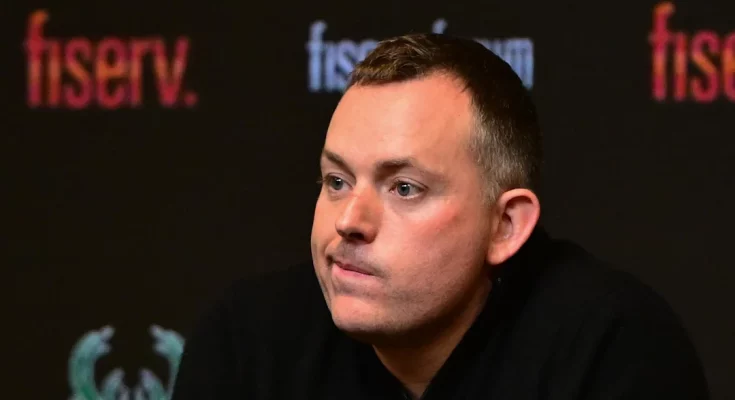The Milwaukee Bucks have made bold moves in recent years to solidify their championship aspirations, but according to one insider, those moves have come at a steep cost. Sam Quinn of CBS Sports recently highlighted that the Bucks have traded away two of the most valuable draft assets in the NBA—their 2029 first-round pick (ranked as the second-most valuable trade asset in the league) and their 2027 first-round pick (ranked sixth). These picks carry significant weight not just because of their distant future timelines but because of the uncertainty surrounding the Bucks’ long-term roster construction.
The reasoning behind Quinn’s assessment is straightforward: the Bucks lack young, developmental talent on their current roster. Unlike teams such as the Oklahoma City Thunder or Orlando Magic, who have built through the draft and nurtured rising stars, Milwaukee has prioritized win-now moves to maximize Giannis Antetokounmpo’s prime. This strategy has left them with minimal young contributors and a reliance on veteran signings. As Quinn notes, “The Bucks have very little talent and struggle at developing it when they find it.” While the team has done well in securing minimum-contract free agents—players like Malik Beasley and Pat Connaughton—there’s no guarantee that their bench will remain strong in the latter half of the decade.
The 2029 pick, in particular, is seen as a potential goldmine for opposing teams because of the inherent risk tied to the Bucks’ future. If Milwaukee remains competitive, the pick may fall in the late 20s. But if Antetokounmpo departs or the roster ages out of contention, that selection could easily become a top-five—or even top-three—pick in a draft class half a decade from now. The same logic applies to the 2027 pick, which was sent to the Portland Trail Blazers as part of the Jrue Holiday trade. Given that Holiday was later flipped to the Boston Celtics, the Blazers now hold a pick that could become extremely valuable if Milwaukee’s fortunes decline.
Quinn’s most alarming observation, however, revolves around Giannis Antetokounmpo’s future. The two-time MVP has been vocal about his desire to compete for championships, and if the Bucks falter, he could seek an exit as soon as 2026. “If you believe that Giannis Antetokounmpo asking out in the summer of 2026 is the most likely scenario, which I do, this is arguably the year in which you are most excited to control Milwaukee’s pick,” Quinn said. Should Giannis leave, the Bucks would immediately enter a rebuild, making their traded picks exponentially more valuable. Teams acquiring those selections are essentially betting against Milwaukee’s ability to sustain success beyond the next few seasons.
The Bucks, of course, are fully aware of the stakes. Their front office is determined to ensure those picks end up in the late first round by maintaining dominance in the Eastern Conference. One way they hope to do that is by pursuing additional upgrades, such as a potential trade for a $66 million wing player to bolster their rotation. Another rumored target is Myles Turner, whose defensive presence and floor-spacing could make Milwaukee a more complete playoff team. The front office understands that the best way to retain Giannis is to prove the organization can build a perennial contender around him.
This upcoming season will be critical in shaping Milwaukee’s future. If the Bucks start strong and look like legitimate title threats, Giannis will likely remain committed. However, if injuries, roster imbalances, or underwhelming performances plague the team early, speculation about his future will intensify. The pressure isn’t just on the players—it’s on the front office to ensure they don’t waste the remaining years of Giannis’ prime.
Trading away valuable draft capital is always a gamble, but for the Bucks, it’s a necessary one. They’ve already won a championship with this core, and their window remains open as long as Giannis is in Milwaukee. The alternative—hoarding picks and hoping to strike gold in the draft—isn’t a viable path for a small-market team with a generational superstar. The downside, of course, is that if things go south, the Bucks could be left without their franchise player and without the draft assets to facilitate a quick rebuild.
For now, the focus is on winning. The Bucks’ strategy is clear: push all the chips to the center of the table and trust that their star power, veteran savvy, and shrewd roster moves will keep them in contention. But as Quinn’s analysis shows, the cost of those bets could haunt them in the years to come.



